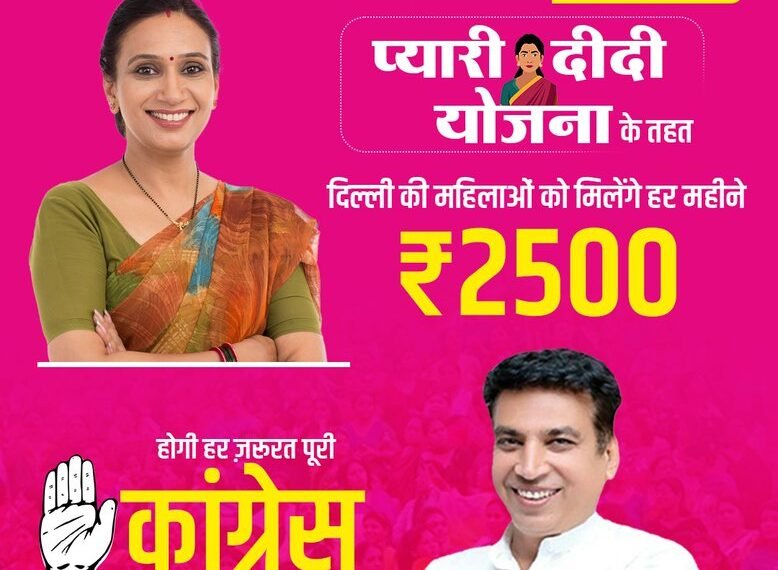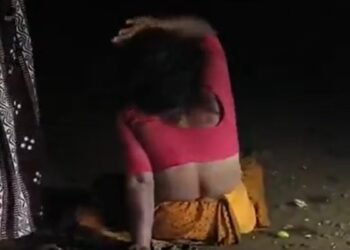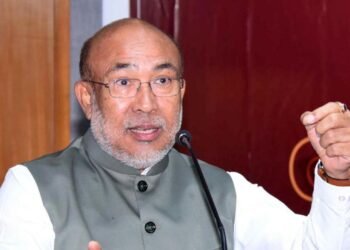Ahead of the polls, Congress and AAP vie for women’s votes with rival schemes offering direct cash benefits. As Congress proposes ₹2,500 per month under ‘Pyaari Didi Yojana,’ AAP counters with a ₹2,100 promise. Are these initiatives game-changers or empty election promises?
BY PC bureau
n the run-up to the Delhi elections, political parties are unveiling a slew of populist schemes aimed at garnering support, particularly from women voters. The Congress party made headlines on Monday with the announcement of its ‘Pyaari Didi’ Yojana, promising a monthly allowance of Rs 2,500 to every woman if elected to power. This comes on the heels of similar initiatives by the Aam Aadmi Party (AAP), which has pledged Rs 2,100 per month to women as part of its election manifesto.
Congress’ ‘Pyaari Didi’ Yojana
'प्यारी दीदी योजना' :-दिल्ली की नारी शक्ति के लिए कांग्रेस की गारंटी!
आज दिल्ली प्रदेश कांग्रेस कमेटी कार्यालय पर कर्नाटक के उप-मुख्यमंत्री श्री @DKShivakumar जी, दिल्ली कांग्रेस प्रभारी @qazinizamuddin जी, दिल्ली प्रदेश कांग्रेस कमेटी अध्यक्ष @devendrayadvinc जी और कांग्रेस के… pic.twitter.com/hHYzllrKPG
— Delhi Congress (@INCDelhi) January 6, 2025
LIVE: Press briefing by Shri @DKShivakumar, Shri @qazinizamuddin, Shri @devendrayadvinc, @LambaAlka Ji, and @NayakRagini ji at DPCC Office, New Delhi.https://t.co/hmcFyRuF3G
— Delhi Congress (@INCDelhi) January 6, 2025
Launched by Karnataka’s deputy chief minister DK Shivakumar, the ‘Pyaari Didi’ Yojana marks a strategic move by Congress to capture the attention of Delhi’s women electorate. Shivakumar expressed optimism about the scheme’s potential impact, citing its success in Karnataka. “We will implement this scheme as soon as we form the government, and Rs 2,500 will be given to women, just like we did in Karnataka,” he said.
The scheme’s rollout in Karnataka earlier this year proved to be a game-changer, boosting Congress’ popularity among women voters. By replicating this model in Delhi, the party hopes to consolidate its voter base and challenge the dominance of AAP.
AAP’s ‘2100 Scheme’ for Women
Not to be outdone, AAP has also made an ambitious promise to provide Rs 2,100 per month to every woman in Delhi. Chief Minister Arvind Kejriwal’s proposal is part of a broader agenda to reinforce AAP’s image as a party that prioritizes welfare and inclusivity. Kejriwal, who has previously championed free education, healthcare, and subsidized electricity, sees this scheme as a natural extension of his governance model.
While critics argue that such initiatives could strain the state’s finances, AAP’s leadership has defended the plan, claiming it to be economically viable through efficient resource allocation and increased revenue from other sectors.
Competing Narratives
The competing schemes have set the stage for a high-stakes electoral battle. Both parties are framing their promises as transformative, aimed at empowering women and alleviating financial burdens. However, the feasibility of implementing these schemes has become a focal point of debate.
Experts have raised concerns about the fiscal implications of such populist measures. Delhi’s existing welfare programs, including free water and subsidized electricity, already consume a significant portion of the state’s budget. Introducing additional cash transfer schemes could lead to budgetary constraints or necessitate cuts in other sectors.
Political Implications
For Congress, the ‘Pyaari Didi’ Yojana represents an opportunity to regain relevance in Delhi’s political landscape, where it has struggled to make a mark in recent years. By targeting women voters, a demographic often overlooked in policy-making, the party aims to carve out a distinct identity.
For AAP, the promise of Rs 2,100 to women serves as a reinforcement of its pro-welfare stance. The party’s track record of delivering on promises, such as free bus rides for women, strengthens its credibility among voters.
Challenges and Criticisms
Despite the electoral appeal, these schemes are not without criticism. Economists warn that cash handouts, while popular, may not address the root causes of women’s economic challenges, such as lack of employment opportunities and wage disparity.
Moreover, the sustainability of these programs is a pressing concern. With limited revenue streams, Delhi’s government may face difficulties in sustaining long-term cash transfer schemes without compromising other developmental initiatives.
Conclusion
As Delhi heads into elections, populist schemes targeting women voters are dominating the political discourse. While Congress’ ‘Pyaari Didi’ Yojana and AAP’s ‘2100 Scheme’ promise immediate financial relief, their feasibility and long-term impact remain subjects of scrutiny. Ultimately, the success of these initiatives will depend not just on their implementation but also on the electorate’s perception of their broader vision for governance.













